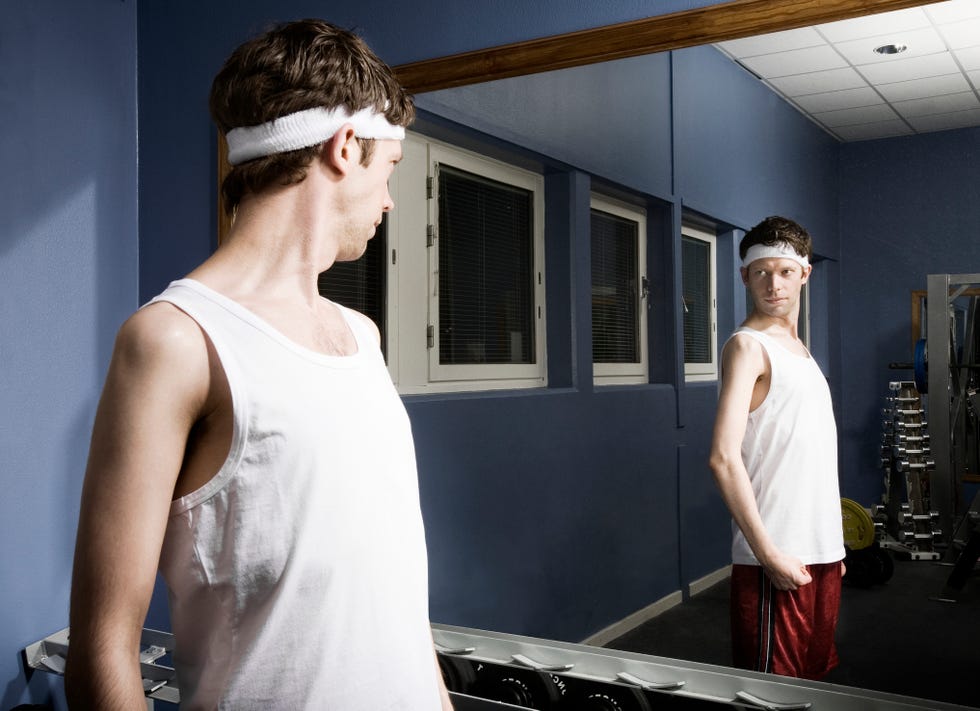NO MATTER WHERE you are on your fitness journey, it can be tough to stay patient. Yes, you might wish you could fast-track your goals so you can cross that finish line (literally or figuratively) ASAP. The sense of accomplishment that comes with tangible progress and reaching new PBs is often what motivates you to keep going. But as a wise man once said, there’s no magic pill for immediate gratification. And, after all, if it were that easy, it wouldn’t be called “work,” right?
Don’t be discouraged if you feel like you haven’t noticed the results you were after immediately. There are lots of changes happening behind the scenes that are worth celebrating.
Just know, exactly how long it takes to see results from your workout routine will vary from person to person. “There are numerous factors that contribute to these timelines,” says Kurt Ellis, C.S.C.S., owner and coach at Beyond Numbers Performance. “Factors such as genetics, age, gender, type of training program, and lifestyle indicators can impact how soon someone will see changes.”
Here, Ellis digs into a few of these key elements, shares some of the results you can expect to see and when, and offers other perspectives on what it means to “see results” so you can celebrate your wins through every stage of your journey.
How long does it take to see results from working out?
You might assume that seasoned gym-goers would see results sooner because they aren’t new to this game, but that’s not necessarily the case, according to Ellis. “Beginners will usually experience results sooner than more advanced athletes because both their baseline level of fitness and training age [how long you’ve been working out] is lower,” he says.
Think of it this way: If you’re a beginner staring at a ladder from the floor, there are more rungs to climb, and therefore more levels to reach – and with each rung, you’re making progress. Whereas more advanced athletes may have already hit some of the lower rungs and milestones and have less distance to travel to the top.

There’s also the matter of neurological adaptations, a.k.a. “newbie gains.” When beginners start strength training, neural adaptations will lead to rapid progress in strength (and to a lesser degree, muscle growth). That early progress is exciting, but it only lasts so long (and probably won’t take you up to the point of accomplishing your larger training goals, anyway). Once you go beyond that initial progress and maybe even hit a plateau, it’s important to remember that you’ll still see results – just more slowly than you did at the start.
One often-cited study from 2009 shows that it takes a minimum of 18 days for someone to form a habit once a decision to change a behaviour is made, and that goes for athletes of all kinds, explains Ellis. So you might consider that timeframe your first benchmark toward progress—and that should be celebrated. Deciding to work toward something, make changes, and commit to them is no easy feat.
From there, “typically you can see tangible changes – whether it be body composition, change in resting heart rate, etc. – within two to six weeks,” says Ellis. That breaks down to roughly two to four weeks for beginners and four to six weeks (or more) for more seasoned athletes, he adds.
Signs you’re getting fitter
Even if weight loss is your goal, the number on the scale is certainly not the only meaningful metric to measure against your progress. (Not to mention, the benefits of fitness and staying active go far beyond just your weight or how you look.)
Neurological adaptations
Lots of the initial “results” from your workouts are happening on an imperceptible, cellular level. As outlined above, whenever you ask the body to do new or challenging things – trying a new sport, learning crow pose in yoga, or merely starting a workout routine for the first time – the brain has to create new pathways to signal the body to perform in ways it hasn’t before. “Neurological adaptations are changes that take place within the nervous system, which play a very important role in improving strength, coordination, motor learning and overall performance,” explains Ellis.
“Neural plasticity [the brain’s ability to adapt and evolve] allows you to continue developing new pathways throughout your fitness journey,” says Ellis. “Because of this, it’s beneficial to manipulate different variables in a training program such as incorporating a variety of movements and some novelty and proper training stimuli. It’s important to continually build on progress to strengthen and stimulate these neural pathways.”
The easiest way to do this is with a pre-made training plan. You’ll know exactly which exercises to do, when to up the intensity, and how much to rest. Get a personalized recommendation from our library of training plans using our Workout Finder below.
Energy
Also, “one of the earliest changes that people would notice is a change in energy levels,” says Ellis. Just as microtears in your muscles caused by strength training help the body to repair, grow, and come back stronger, there’s a similar process for your energy levels. Exerting yourself during a workout might make you feel taxed during a session, but this challenge actually signals to your body to produce more mitochondria, the energy stars of your cells, according to Harvard Health.
Mood
Also, thanks to the release of feel-good hormones like endorphins during exercise, your new fitness routine can also give you a mood boost. Physical activity of all kinds releases endorphins, but research is still evolving as to what type of training or workout intensity gives you the biggest endorphin rush. For example, one 2017 study published in the journal Neuropsychopharmacology suggests that high-intensity training is the way to go if you’re looking for that “exercise high.”
Sleep
Another big result you’ll likely notice fairly early after beginning a new fitness routine or training program is better sleep. Don’t underestimate this as a key factor to your overall health. Adequate rest can be a crucial factor for maintaining motivation for training both in the short and long term, according to one small 2013 study.
Other benchmarks to consider to track workout results
In addition to some of the more lifestyle measures like energy and sleep, if you’re someone who is looking for something a bit more measurable, Ellis suggests one of two quantitative benchmarks depending on your fitness goals.
For those looking for results from strength training, you could track progress against absolute strength. This is often measured by the one-rep max (1RM) test – the heaviest weight you can lift in a single exercise, such as a bench press or a barbell squat, for one rep at the full range of motion and with proper form. (If you’re newer to strength training, we suggest you test for a three to five rep total, then use a training load chart for a one rep max rather than going all-out for a single rep.) You could also look at your progress in relative strength, which takes your body into account, looking at how much you can lift compared to your body weight, says Ellis. Simply divide the weight lifted by your body weight to find this measure.
If you have more endurance and cardio-focused goals, the universally used metric to measure progress is your VO2 max. This essentially measures how efficiently your body is able to use oxygen. But know this: Accurately tracking your VO2 max requires lots of fancy equipment and is best done in a lab setting. Luckily, due to the demand of athletes wanting a more realistic way to assess their numbers, many fitness trackers and smartwatches offer a VO2 max estimate, which you can use to track your progress.
Use SMART goals
Remember that when it comes to thinking about your workout results, how you set your goals initially can make a big difference. “Setting SMART (specific, measurable, attainable, realistic, time-bound) goals are major keys to success,” says Ellis. “Athletes will typically see long-term, sustainable results when they include process goals along the way to their big-picture goals.”
Think about it: Getting swole or “getting abs” involves so much more than simply working out. “Highlighting the importance of other aspects, such as sleep quality, proper nutrition principles, and joining a community, go a long way in setting habits that can change the trajectory for your overall well being for the better,” he says. Once you can think of your workout routine as being just one aspect of a more comprehensive healthy lifestyle, you might have an easier time staying patient.
This article originally appeared on Men’s Health US.
Related:
Why Breaking Your Training Into Short Workouts Can Enhance Your Results















